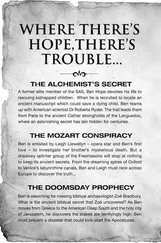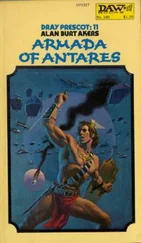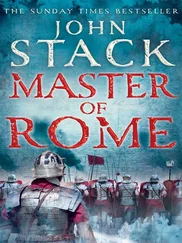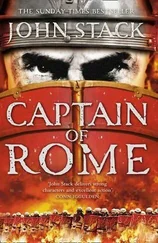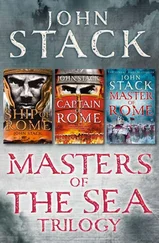Soon a new Armada would set sail from the shores of Spain, and Evardo would be one its comandante s. As the locals began to board the Santa Clara he straightened his shoulders and adjusted his torn and salt-stained clothes. The gesture reminded him of another moment over a year before. From the depths of an English prison he had risen to command a galleon of the Armada and regained all that he had lost. He could make that journey again. His body and spirit may be weak but his will remained strong and suddenly he was filled with an eagerness to begin anew, to take the fight back to the English, for God, his King and Spain.
Robert dismounted and began to climb the slope of the motte. The sun was on his back and he paused at the rim as he had done many times in the past, looking back at the ancient church of Saint Michael’s. He was breathing hard but for the first time in weeks he felt strong. He held his face up to the late summer sun, drinking in its warmth as he inhaled the scents of the English countryside.
For days after Gravelines the English fleet had shadowed the Armada as it sailed towards Scotland. Seymour had taken his squadron back to the Flemish coast, fearing an opportunistic attempt by Parma to cross the Channel, but the other four had continued on, finally abandoning their pursuit when the Spaniards cleared the Firth of Forth.
Still uncertain, they had returned to the Channel. No one knew the enemy’s intentions. If conditions changed in their favour, there was every chance the Armada would return southwards to try to link up with Parma again, or they might refit and restock in a Scandinavian or Scottish port. Their fate and course was unknown. Howard had been forced to keep the fleet on alert in the waters off Dover.
The first cases of pestilence surfaced within days. Crowded together, with shortened rations, the flux had spread rapidly throughout the fleet. On the Retribution alone nearly half the crew were struck down by the terrible disease. Few had survived. As one of the more heavily engaged ships in the battles against the Armada, the Retribution had suffered twelve killed in combat. The flux took more than six times that number, nearly a third of the crew. Little or nothing had been done to relieve their plight and every entreaty from the fleet commanders to the Privy Council had been all but ignored.
After four weeks the fleet was finally given leave to stand down, but by then it was too late for many. Through eyes closed against the sun Robert pictured the faces of those who had died – his old comrade and master’s mate Miller, the boatswain Shaw, the master gunner Larkin, and dozens more who would remain with him forever.
He turned and began to pick his way through the ruins, looking for signs of where the ground had been disturbed. He thought of Thomas Seeley and their parting earlier that morning.
‘Home to recuperate,’ Seeley had answered when asked by Robert what he would do next.
They had been standing on the main deck of the Retribution , at the head of the gangplank onto Plymouth docks.
‘And what then, Thomas? We sail in two weeks to Dover for refit, and the Retribution needs a Master.’
Seeley had nodded, looking past Robert to the range over the galleon. He had turned to leave but Robert had stopped him, offering his hand.
‘Thank you, Thomas. For everything. I hope I’ll see you again.’
For a heartbeat Seeley had hesitated, a shadow passing over his face. He had taken Robert’s hand, but only briefly. ‘You will, Captain.’
Seeley had then taken a small cloth parcel from his pocket and handed it to Robert before walking down the gangplank and away along the docks without a backward glance.
Robert stopped as he spotted a mound in the centre of a small clearing in the ruins. It was covered by dense undergrowth, a sign that the earth had been recently turned over and richer soil had been uncovered. He walked over to it and looked down at the grave, his thoughts returning to the night Father Blackthorne had died, and of his father and how they had fought, sword against sword in the darkness.
Robert knelt down. He reached into his pocket and took out the cloth parcel Seeley had given him, opened it and took out the silver crucifix and marble statuette of the Blessed Virgin Mary. They felt light in his hand. They were all that remained of his father. His body had been cast into the sea, along with the other Englishmen who had died in battle.
He pulled out a clump of weeds from the mound and dug a small hole in the loose soil, placing the crucifix within it. He closed his eyes and prayed, for Father Blackthorne and for Nathaniel Young. He buried the icon, hoping that its presence would sanctify the ground that held the body of his confessor. He stood up and examined the statuette in his hand. He looked at its base, his finger tracing the inscription, Young . It was the only physical link that remained to his real name and he slipped the statuette into his pocket.
Robert returned to where his horse was tethered. He mounted and looked up one last time at the summit of the motte, wondering if another Catholic priest would one day take responsibility for Father Blackthorne’s flock and recite mass amidst the ruins. Robert would never know. Although his faith remained strong, he would never again return to the motte. That part of his life was behind him, not forgotten but gone forever. He kicked his horse into a canter. He was Sir Robert Varian, knight of the realm, a loyal recusant and captain of the Retribution . As he passed Saint Michael’s, he turned his mount towards Brixham, and home.
HISTORICAL NOTE
As the Armada sailed north from the Banks of Flanders on the 9th August 1588 few considered the battle to be over. The Spanish fleet had reformed into their defensive formation and in a council of war held on board the San Martín the senior commanders voted unanimously to turn around, if conditions allowed, and make a second attempt to link up with Parma. But in many ways it was a hollow resolution. They had been badly mauled. Many ships were struggling to keep up with the fleet and few believed they could force their way through an enemy fleet that had already defeated them in pitched battle.
What they did not know however was that the English pursuing them to windward were no longer capable of continuing the fight. They were sailing in good order. Their warships had sustained only minimal damage and they now knew that the key to victory was to close to within arquebus shot before discharging their heavy guns. But at that moment such knowledge was worthless for their shot lockers were empty and they were desperately short of victuals.
The English commanders were equally concerned as to what the enemy might attempt next. They had sunk one Spanish warship and driven two more onto the shoals but against such a large fleet these were mere scratches and the Armada as a whole remained intact. The enemy seemed far from beaten. Ahead of them lay Scottish and Scandinavian ports where they could regroup before returning south to renew their campaign. To the rear of the English fleet Parma was continuing to embark his invasion army.
In the end, however, Gravelines proved to be the last encounter of the campaign. On the 10th August Medina Sidonia ordered the fleet to return to Spain via a route around Scotland and Ireland and into the north Atlantic. The English fleet, as Howard described, ‘put on a brag countenance and gave chase,’ shadowing the Armada until the Firth of Forth while Seymour returned to the Channel with his squadron to guard against a crossing by Parma. Over a week later the Privy Council deemed it safe enough for Elizabeth to travel to her army massed at Tilbury where she delivered her famous speech.
Читать дальше
Конец ознакомительного отрывка
Купить книгу


